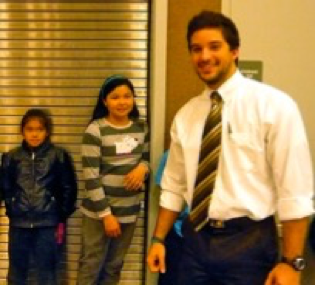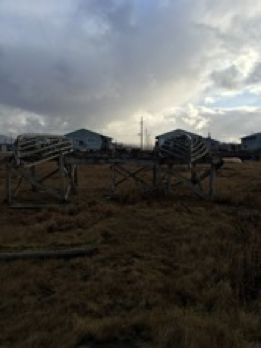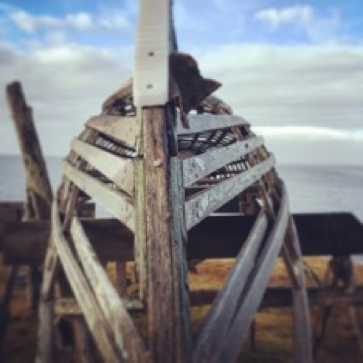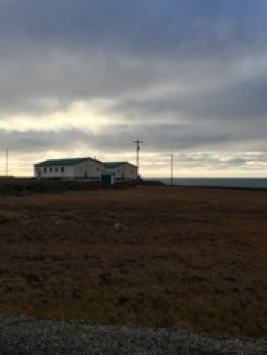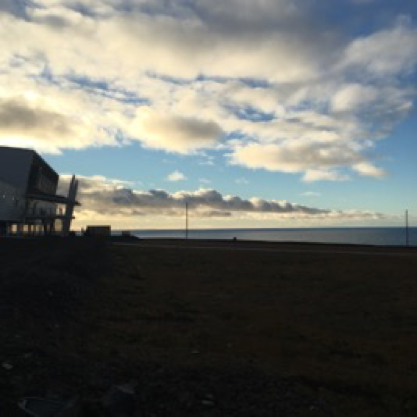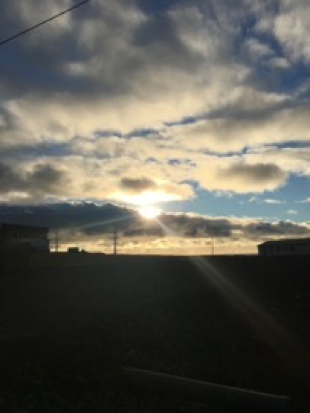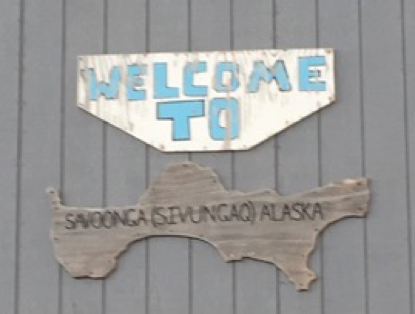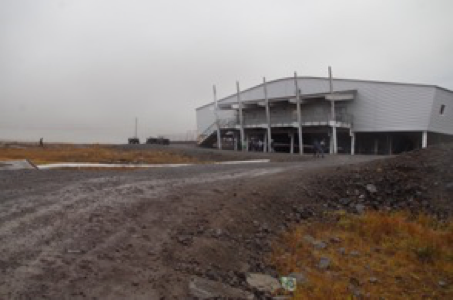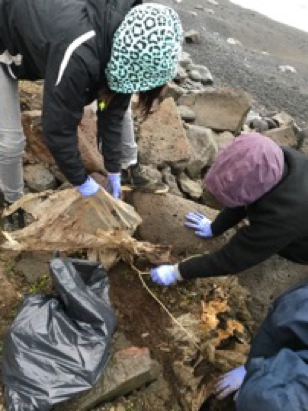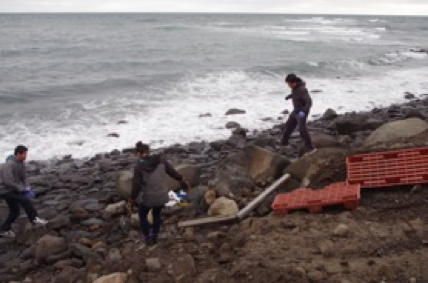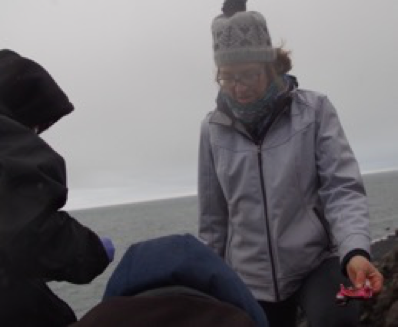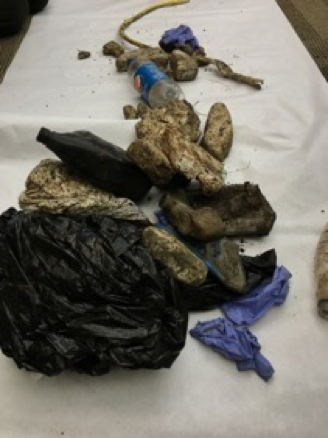The purpose of the Savoonga School Land Steward Program was to create an extracurricular activity of marine debris monitoring of beaches near the Hogarth Kingeekuk Sr. Memorial School with the students that could be used as a basis for writing in English class. The focus was two-fold: (1) to raise awareness of environmental concerns (helping to raise a generation of environmentally conscious citizens); and (2) to add meaning to writing (punctuation, grammar, spelling, and content) in non-fictional areas – specifically to make place-based learning help the kids connect their lives to academic subjects, and using this particular long-term project as a means to teach students about various branches of science.
For example, students learned about:
- Hydrology: how streams and rivers within a watershed are interconnected and eventually lead to the ocean;
- Oceanography: how ocean currents move marine debris around the planet and how ice sheets can trap marine debris and what that means for the environment;
- Biology and ecology: how the ocean is home to many organisms, and how those organisms are impacted by marine debris; and
- Material science: how marine debris is mostly composed of plastic, and how the chemical makeup of plastic makes it such that it does not biodegrade over time.
The learning goals for students included:
- Understanding the interconnectedness of environments across the planet;
- Understanding that humans can make major impacts on the environment;
- Understanding that humans can only survive if the environment around them is healthy and functioning;
- Understanding that in the case of marine debris, their actions and choices can make a difference in reducing its harmful impacts;
- Understanding that writing about science is a great way to use English class to make life in Savoonga more connected to the outside world;
- Increasing vocabulary through the use of science in English class;
- Increasing sentence writing fluency through meaningful projects that are place-based; and
- Creating an interdisciplinary project to allow students to see the connection between science, the natural world, and reading and writing skills.
We aimed to create relevance to the Savoonga community by:
- Raising and educating children to be environmentally conscious;
- Giving students writing tools to work in the sciences;
- Raising awareness among the community of how their actions impact the environment around them;
- Building a culture of caring for the environment; and
- Keeping the environment clean through beach cleanup activities.
Project status and milestones:
- Marine debris collection and categorization trip in Savoonga – September 2016
- Results presented at Alaska Marine Science Symposium – January 2017
Project Location
Project products and resources are available below.
Project Products
We created a poster reporting on activities during Veronica’s visit to Savoonga in September 2016, and included marine debris data reported to the Marine Debris Tracker.
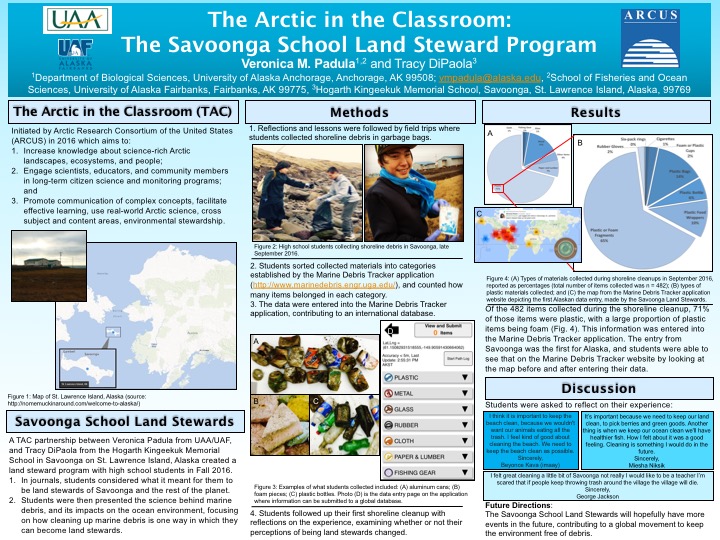
“The Mobile App Marine Debris Tracker originated in 2010 from a joint partnership of the NOAA Marine Debris Program and the Southeast Atlantic Marine Debris Initiative (SEA-MDI), located within the College of Engineering at the University of Georgia. A primary goal of SEA-MDI was to use innovative technologies and unique expertise to add culturally relevant outreach tools and information to the NOAA Marine Debris Program. Marine Debris Tracker is a product of this initiative. We hope that it spreads awareness of marine debris, as well as serve as an easy to use and simple tool for marine debris data collection. In 2015, funding from 11th Hour Racing (A Program of The Schmidt Family Foundation) is allowing us to expand the tracker as a culturally relevant outreach and data collection tool for the sailing community. Please feel free to provide feedback to us individually (developers below) or at sea.marine.debris [at] gmail.com. Need a customized Marine Debris App? Marine Debris Tracker will likely soon serve your needs with customized lists, so contact us for more details on how that can be done. We would like to acknowledge the work of the following people on this project.”
The data collected by students were submitted to a global database of marine debris data. Citizen Scientists from around the world have been contributing to this database since 2010.
Website
The Marine Debris TrackerDates
-Location
Savoonga, AlaskaMembers
Lead Scientist
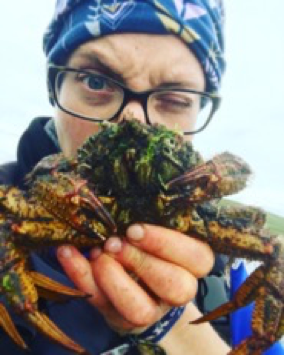
Lead Teacher

Lead Teacher
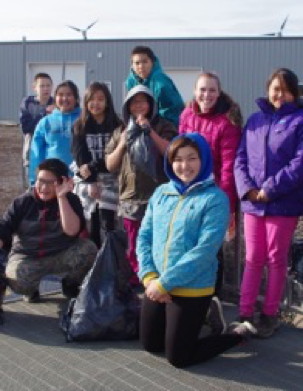
Assistant Principal
